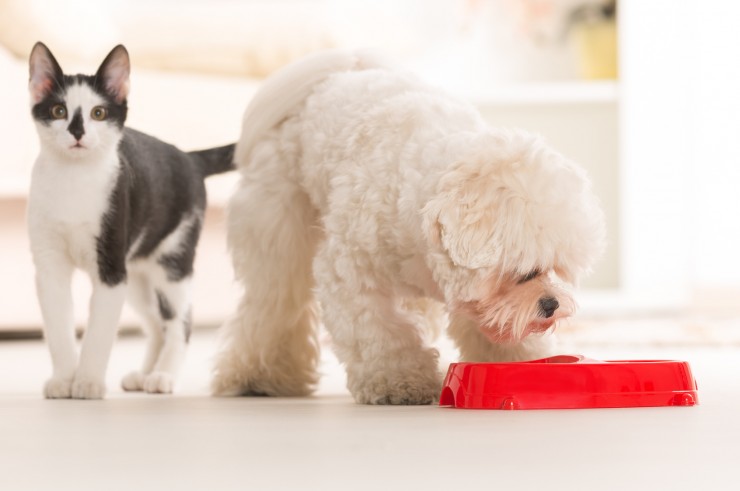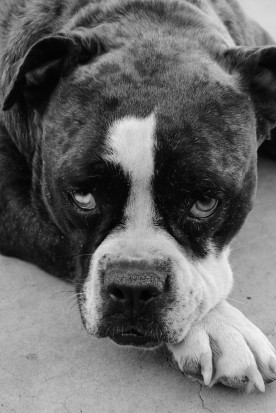
Unfortunately, old age and often arthritis catches up to our canine
companions as easily as it does to us. You may notice your dog has
trouble going up stairs or getting down from a car seat.
First, make sure this is not a disease or condition that can corrected
surgically. If it’s chronic or the effects of aging, however, Louise Louis
of www.ToyBreeds.com reminds us that we can lessen the negative impacts
with a few simple techniques.
1. Don’t let your dog get overweight. This is the most important thing
you can do for him. Excess weight puts more pressure on his joints just
as it does to you. Make sure you can feel his ribs and put him on a diet
if need be.
2. Avoid activities that tax his joints. Never let a Toy breed jump down
from a sofa (or anywhere) or jump up to catch something. Leave the Frisbees
to Labradors and rely on walking or swimming for your pet’s exercise.
3. If Fido seems to be in pain, talk to your vet about using glucosamine.
In the veterinary form, it is sold as Synoquin. However, the animal brand
is very expensive compared to the generic brands that humans take.
Ask your vet about using the human version provided the tablets can be purchased
or cut into a proper dosage for a small dog and have the quantity of
glucosamine required.
Depending on the degree of pain your dog is suffering, a buffered aspirin may
provide all the relief that’s needed.
If your dog is going lame, your vet my prescribe Rimadyl or Meloxicam for
when he is stiff. These can be upset a dog’s stomach and are also expensive.
Be sure to check the Internet veterinary pharmacies for prices.
4. Many dog owners try other natural, non-harmful treatments such as
magnetic collars, acupuncture, massage, homeopathy and herbs. While
I’ve heard anecdotal information on how well these work, I know of no
scientific studies that support them.
That doesn’t mean I wouldn’t try one especially acupuncture. Ask for your
vet or friends/breeders/trainer/groomer for recommendations of practitioners
of these techniques.
5. Control his environment for his comfort. Make sure he sleeps on a warm,
soft bed. Avoid cold, damp climates and over activity. If you have uncarpeted
floors, beware of throw rugs and slippery areas where Fido can slide,
twist and injure his hip.
6. As a last resort, consider a total hip replacement surgery (THR).
In addition to the expense (up to $5,000), there is a lengthy recovery
period which is often difficult for dogs and their owners and post-surgical
checkups for the rest of your dog’s life.
Do the best you can to control your dog’s mobility problems and identify
the least medication that relieves his pain. When that doesn’t work anymore,
then consider some form of surgery.
Louise Louis is a certified canine specialist and
creator of the popular website on small dogs,
http://www.ToyBreeds.com
 How To Keep A Welsh Springer Spaniels Coat Looking Good
How To Keep A Wel
How To Keep A Welsh Springer Spaniels Coat Looking Good
How To Keep A Wel
 Five Top Tips For Keeping Your Dog Away From The Cat Food!
Five Top Tips For
Five Top Tips For Keeping Your Dog Away From The Cat Food!
Five Top Tips For
 Hypoallergenic Dogs - Fact Or Fiction?
Hypoallergenic Do
Hypoallergenic Dogs - Fact Or Fiction?
Hypoallergenic Do
 The Alapaha Blue Blood Bulldog - A Most Unusual Breed!
The Alapaha Blue
The Alapaha Blue Blood Bulldog - A Most Unusual Breed!
The Alapaha Blue
 Male Dog Behaviour - Some Commonly Asked Questions
Male Dog Behaviou
Male Dog Behaviour - Some Commonly Asked Questions
Male Dog Behaviou
Copyright © 2005-2016 Pet Information All Rights Reserved
Contact us: www162date@outlook.com